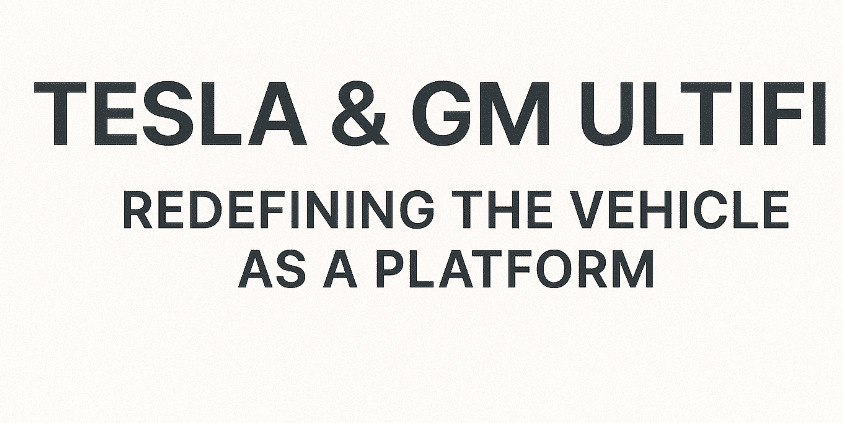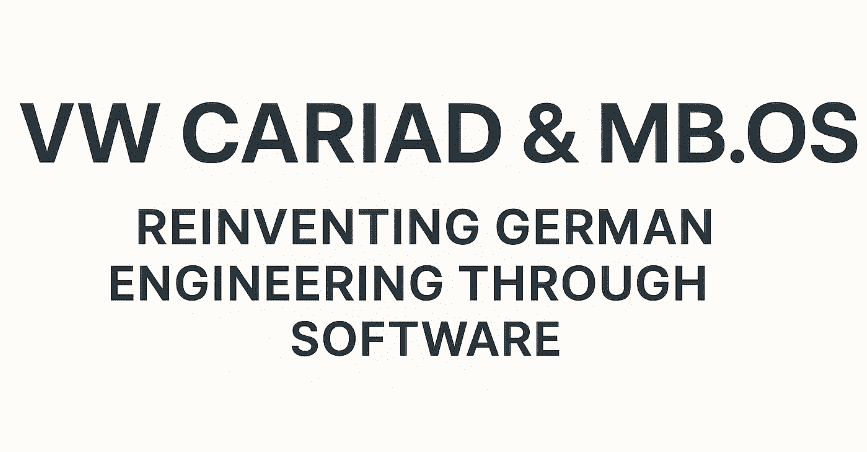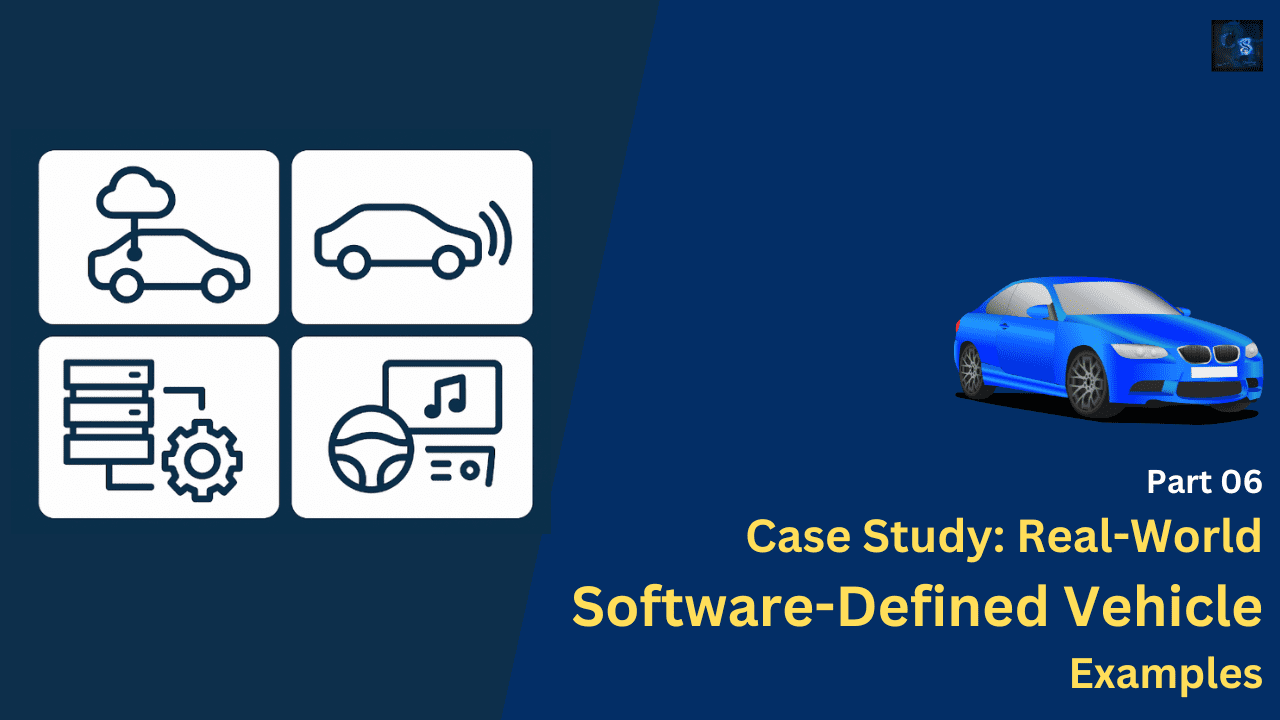Case Study: Real-World Software-Defined Vehicle Examples: Part 06
Hello guys, welcome back to my blog. In this article, I will discuss some case studies on real-world software-defined vehicle examples.
Ask questions if you have any electrical, electronics, or computer science doubts. You can also catch me on Instagram – CS Electrical & Electronics
- Software-Defined Vehicles Development Lifecycle: Part 05
- Software-Defined Vehicles Enabling Technologies: Part 04
- Core Software Layers In Software Defined Vehicles: Part 03
Real-World Software-Defined Vehicle Examples
In recent years, the automotive industry has shifted gears from mechanical marvels to intelligent machines powered by software. As OEMs race to build cars that think, learn, and evolve, Software Defined Vehicles (SDVs) are becoming the cornerstone of modern mobility. Let’s explore some prominent real-world implementations of SDVs by automotive giants like Tesla, General Motors (GM), Volkswagen (VW), Mercedes-Benz, and a variety of emerging players shaping this future.
These case studies not only reflect technological transformation but also hint at deeper shifts in OEM strategies—from hardware-focused to software-centric, from static functionality to continuous evolution, and from siloed systems to integrated platforms.
Tesla & GM Ultifi – Redefi
ning the Vehicle as a Platform

Tesla: The First True SDV Innovator
Tesla is often hailed as the pioneer of the modern SDV era. Unlike traditional OEMs, Tesla developed its vehicles with a software-first mindset. At the heart of Tesla’s success is a vertically integrated software stack that controls everything from battery management to advanced autonomous capabilities. Tesla vehicles receive frequent over-the-air (OTA) updates that not only fix bugs but also add entirely new features, such as performance boosts, gaming consoles, or even new Autopilot capabilities.
Tesla’s approach eliminates the need for separate control units from tier-1 suppliers. Instead, a central computing platform with a highly integrated operating system manages the entire vehicle. The Full Self-Driving (FSD) stack demonstrates Tesla’s ability to iterate rapidly on AI-driven perception and decision-making, pushing updates as frequently as software companies release app versions.
Tesla’s SDV model exemplifies a “vehicle-as-a-service” paradigm. Ownership is no longer static—it’s dynamic, with features and driving experiences evolving over time.
GM Ultifi: Scalable, Cloud-Native Architecture
General Motors is taking a significant leap forward with its Ultifi software platform. Unlike Tesla’s closed architecture, Ultifi aims for a more developer-friendly and modular platform. Ultifi sits atop GM’s Vehicle Intelligence Platform (VIP), a high-speed data and power architecture that allows for significant compute performance.
Ultifi is designed with a Linux-based OS and allows GM to decouple software development from hardware design. This modularity enables continuous feature deployment, remote diagnostics, personalized user experiences, and seamless integration with cloud services.
What sets Ultifi apart is its focus on ecosystem development. GM envisions third-party developers building apps and services—ranging from infotainment to smart home integrations—creating an app store-like experience within vehicles.
VW CARIAD & MB.OS – Reinventing German Engineering Through Software

Volkswagen’s CARIAD: Building a Unified Software Stack
CARIAD (Car, I Am Digital) is Volkswagen Group’s ambitious software arm formed to unify and streamline the software development process across its many brands—VW, Audi, Porsche, etc. It’s the backbone of VW’s SDV strategy, aiming to deliver a shared software platform by 2025.
CARIAD is developing a central vehicle operating system (VW.OS), a cloud platform (VW.AC), and a unified software architecture (E³ 2.0) for vehicle domains. The goal is to replace hundreds of disparate ECUs with a handful of High-Performance Computers (HPCs), making software development more scalable and update-friendly.
While CARIAD has faced delays and growing pains, it represents one of the boldest attempts to in-source software development and reduce reliance on tier-1 suppliers. With billions invested and thousands of engineers onboard, VW aims to become a software powerhouse akin to a tech company.
Mercedes-Benz MB.OS: Luxury Meets Intelligence
Mercedes-Benz is reimagining premium vehicles with its bespoke MB.OS, a purpose-built operating system for its next-gen vehicles. Unlike general-purpose OS stacks, MB.OS is deeply embedded in the brand’s vision of luxury, focusing on personalized UX, AI-powered assistance, and seamless infotainment integration.
Mercedes collaborates with tech giants like NVIDIA, utilizing its Orin SoC for in-vehicle AI and autonomous driving compute power. MB.OS is built around zonal architectures, central compute modules, and AI-enhanced perception systems.
Emerging Players and Platforms – The New Frontier

NIO, XPeng, and BYD
Chinese OEMs like NIO and XPeng are leading the SDV revolution in Asia with cloud-native platforms, full-stack autonomous driving, and dedicated AI accelerators. These companies heavily rely on OTA updates, AI-based driver monitoring, and next-gen infotainment to create differentiated experiences.
Rivian and Lucid Motors
Startups like Rivian and Lucid Motors are challenging traditional paradigms with clean-sheet SDV designs. Their architectures emphasize centralized computing, OTA-first software deployment, and real-time telemetry.
Rivian, for instance, deploys a Service-Oriented Architecture (SOA) that simplifies communication across vehicle systems, while Lucid builds on NVIDIA-based compute units for its DreamDrive ADAS.
Tier-1 Suppliers Becoming Platform Providers
Companies like Bosch, Continental, and ZF are transitioning from component suppliers to software platform enablers. Bosch’s Vehicle Computer, for instance, integrates multiple domains into a central ECU with pre-packaged safety software. These suppliers now offer their own middleware platforms, virtualization layers, and OTA infrastructures, enabling OEMs to deploy SDV features faster.
Mercedes-Benz emphasizes long-term customer relationships through features like dynamic upgrades, subscription-based services (heated seats, advanced driving assistance), and ultra-customizable cabin experiences.
This was about “Case Study: Real-World Software-Defined Vehicle Examples“. Thank you for reading.
Also, read:
- 100 (AI) Artificial Intelligence Applications In The Automotive Industry
- 1000+ Automotive Interview Questions With Answers
- 2024 Is About To End, Let’s Recall Electric Vehicles Launched In 2024
- 50 Advanced Level Interview Questions On CAPL Scripting
- 7 Ways EV Batteries Stay Safe From Thermal Runaway
- 8 Reasons Why EVs Can’t Fully Replace ICE Vehicles in India
- A Complete Guide To FlexRay Automotive Protocol
- Adaptive AUTOSAR Vs Classic AUTOSAR: Which One For Future Vehicles?
